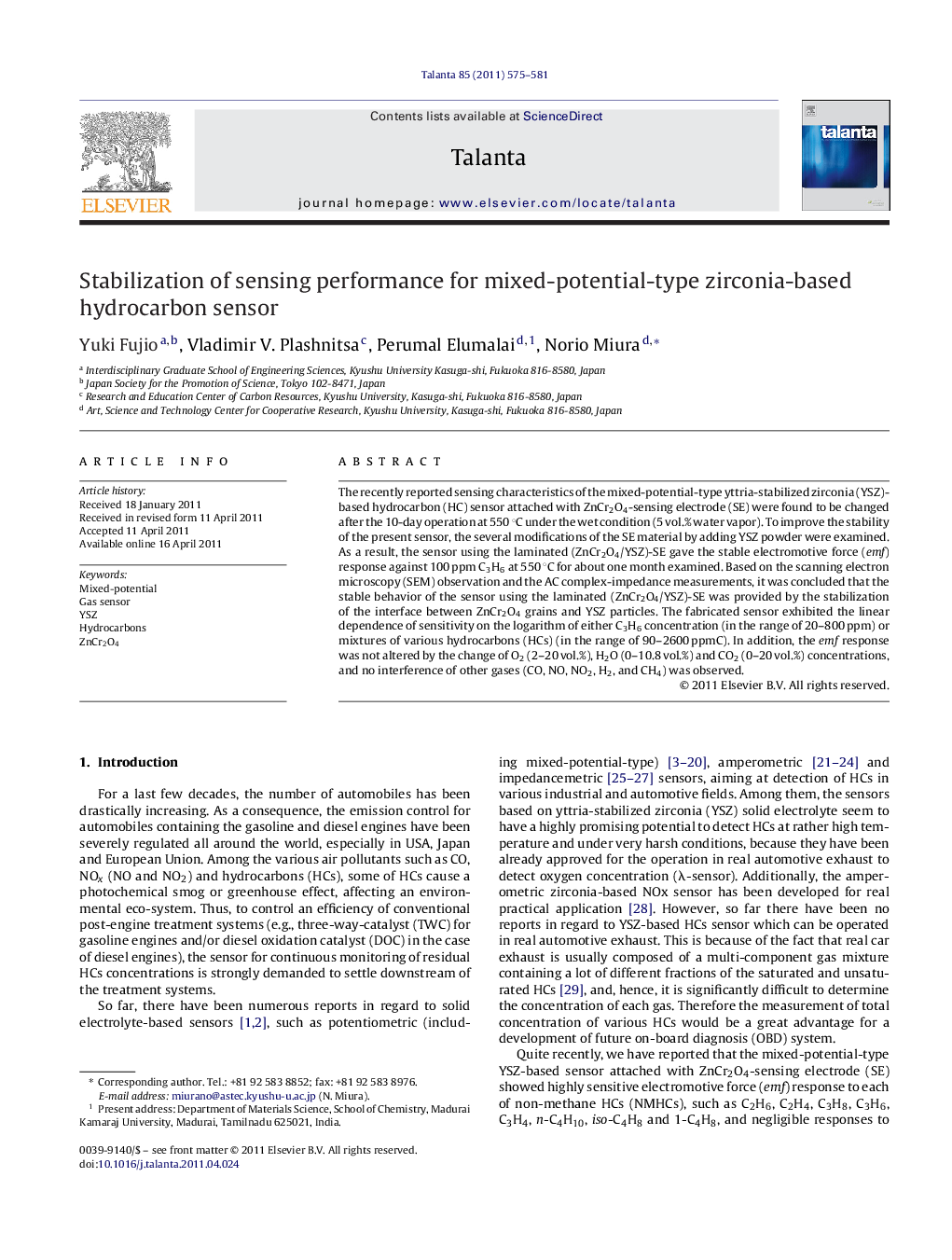| Article ID | Journal | Published Year | Pages | File Type |
|---|---|---|---|---|
| 10559837 | Talanta | 2011 | 7 Pages |
Abstract
The recently reported sensing characteristics of the mixed-potential-type yttria-stabilized zirconia (YSZ)-based hydrocarbon (HC) sensor attached with ZnCr2O4-sensing electrode (SE) were found to be changed after the 10-day operation at 550 °C under the wet condition (5 vol.% water vapor). To improve the stability of the present sensor, the several modifications of the SE material by adding YSZ powder were examined. As a result, the sensor using the laminated (ZnCr2O4/YSZ)-SE gave the stable electromotive force (emf) response against 100 ppm C3H6 at 550 °C for about one month examined. Based on the scanning electron microscopy (SEM) observation and the AC complex-impedance measurements, it was concluded that the stable behavior of the sensor using the laminated (ZnCr2O4/YSZ)-SE was provided by the stabilization of the interface between ZnCr2O4 grains and YSZ particles. The fabricated sensor exhibited the linear dependence of sensitivity on the logarithm of either C3H6 concentration (in the range of 20-800 ppm) or mixtures of various hydrocarbons (HCs) (in the range of 90-2600 ppmC). In addition, the emf response was not altered by the change of O2 (2-20 vol.%), H2O (0-10.8 vol.%) and CO2 (0-20 vol.%) concentrations, and no interference of other gases (CO, NO, NO2, H2, and CH4) was observed.
Related Topics
Physical Sciences and Engineering
Chemistry
Analytical Chemistry
Authors
Yuki Fujio, Vladimir V. Plashnitsa, Perumal Elumalai, Norio Miura,
